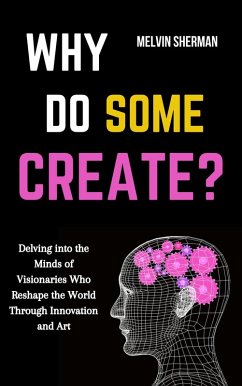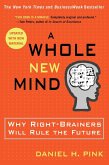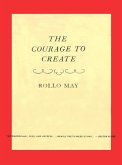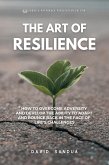Visionaries share an ability to recognize possibilities where others see limitations. They operate with a mindset that resists conformity, welcoming uncertainty as part of the creative process. Through in-depth analysis of historical and contemporary figures, this book uncovers the cognitive patterns, decision-making strategies, and work ethics that allow innovators to break new ground. Whether in science, technology, literature, or the arts, creators follow distinct mental pathways that enable them to connect ideas in unexpected ways.
A critical factor in creative success is the willingness to embrace failure. Many assume that breakthroughs occur in moments of effortless inspiration, but history reveals a different realityone where trial, error, and persistence are the driving forces. The book examines how creators learn from setbacks, refine their approaches, and maintain their drive despite external skepticism. This ability to turn failure into insight separates those who create from those who hesitate.
Beyond individual determination, environment plays a significant role in shaping a creator's development. Patterns emerge in the backgrounds of great visionariesearly exposure to diverse ideas, access to mentors, and a tolerance for uncertainty all contribute to their ability to think differently. The book highlights how intellectual curiosity, rather than formal education alone, fosters a mindset capable of innovation. It also explores the paradox of constraintshow limitations often spark the most profound creative leaps.
Another recurring theme is the relationship between solitude and collaboration. Some of the most groundbreaking ideas emerge in moments of deep reflection, yet nearly all major creative advancements involve some form of external influence. Innovators do not work in isolation; they observe, adapt, and respond to the world around them. This balance between independent thought and interaction with others is a key element in translating vision into reality.
Discipline and routine are often overlooked aspects of the creative process. While inspiration may strike unpredictably, sustained output requires structure. The book examines how creators develop systems that support their work, from daily rituals to unconventional productivity strategies. Rather than waiting for the perfect moment, successful innovators cultivate conditions that allow creativity to flourish consistently.
Emotional resilience is another defining characteristic. Creative individuals face resistance, whether from societal norms, financial pressures, or their own internal doubts. This book investigates how they navigate criticism and maintain conviction in their ideas. The ability to persist despite external opposition is not a trait one is born withit is developed through experience and reinforced by a clear sense of purpose.
Creativity is neither an accident nor a mystery. It is a process shaped by mindset, resilience, environment, and disciplined effort. By examining the minds of those who have fundamentally changed the way people think, work, and create, Why Do Some Create? reveals the principles that drive innovation and artistic mastery.
Dieser Download kann aus rechtlichen Gründen nur mit Rechnungsadresse in A, B, CY, CZ, D, DK, EW, E, FIN, F, GR, H, IRL, I, LT, L, LR, M, NL, PL, P, R, S, SLO, SK ausgeliefert werden.
Hinweis: Dieser Artikel kann nur an eine deutsche Lieferadresse ausgeliefert werden.









